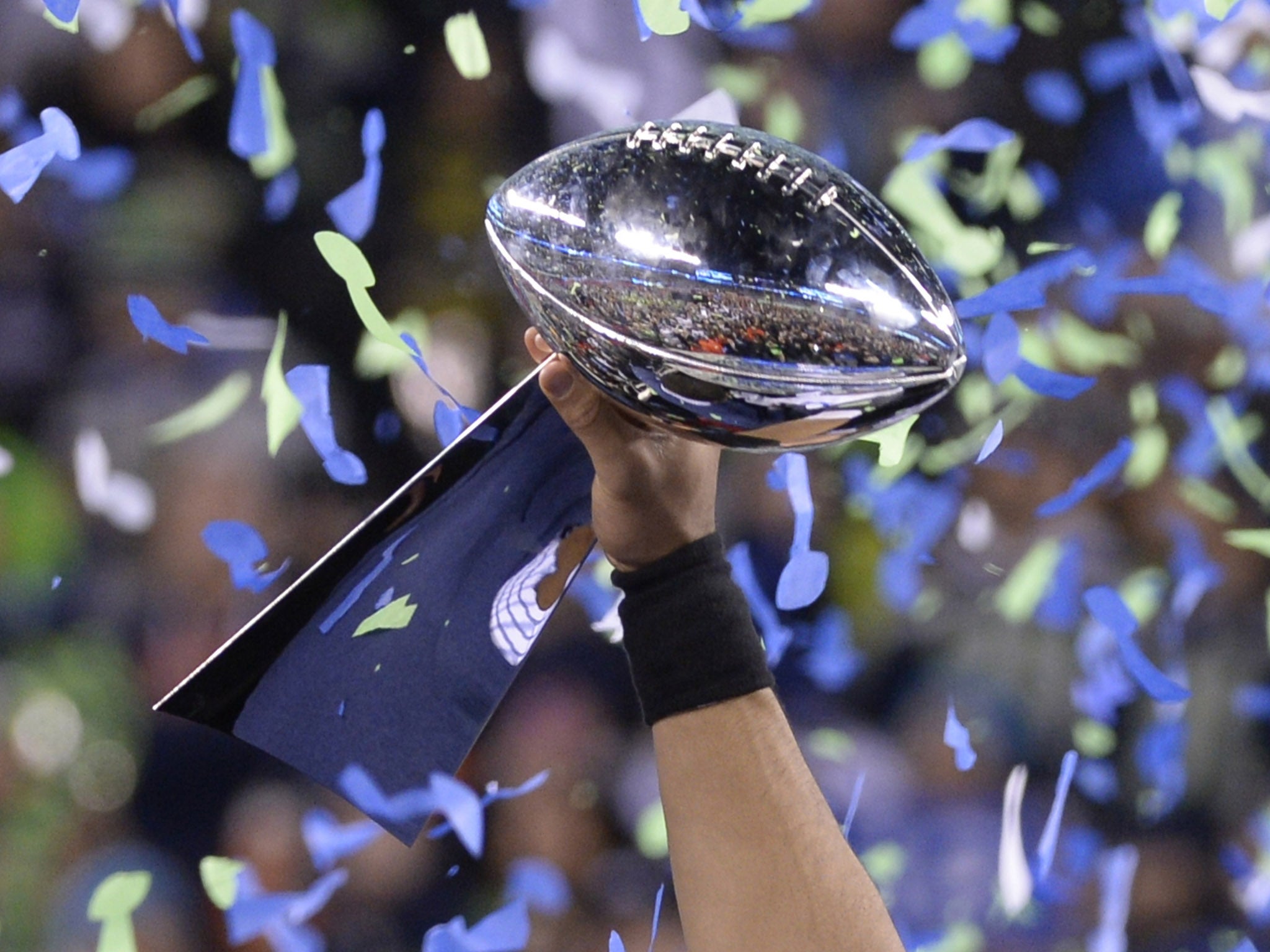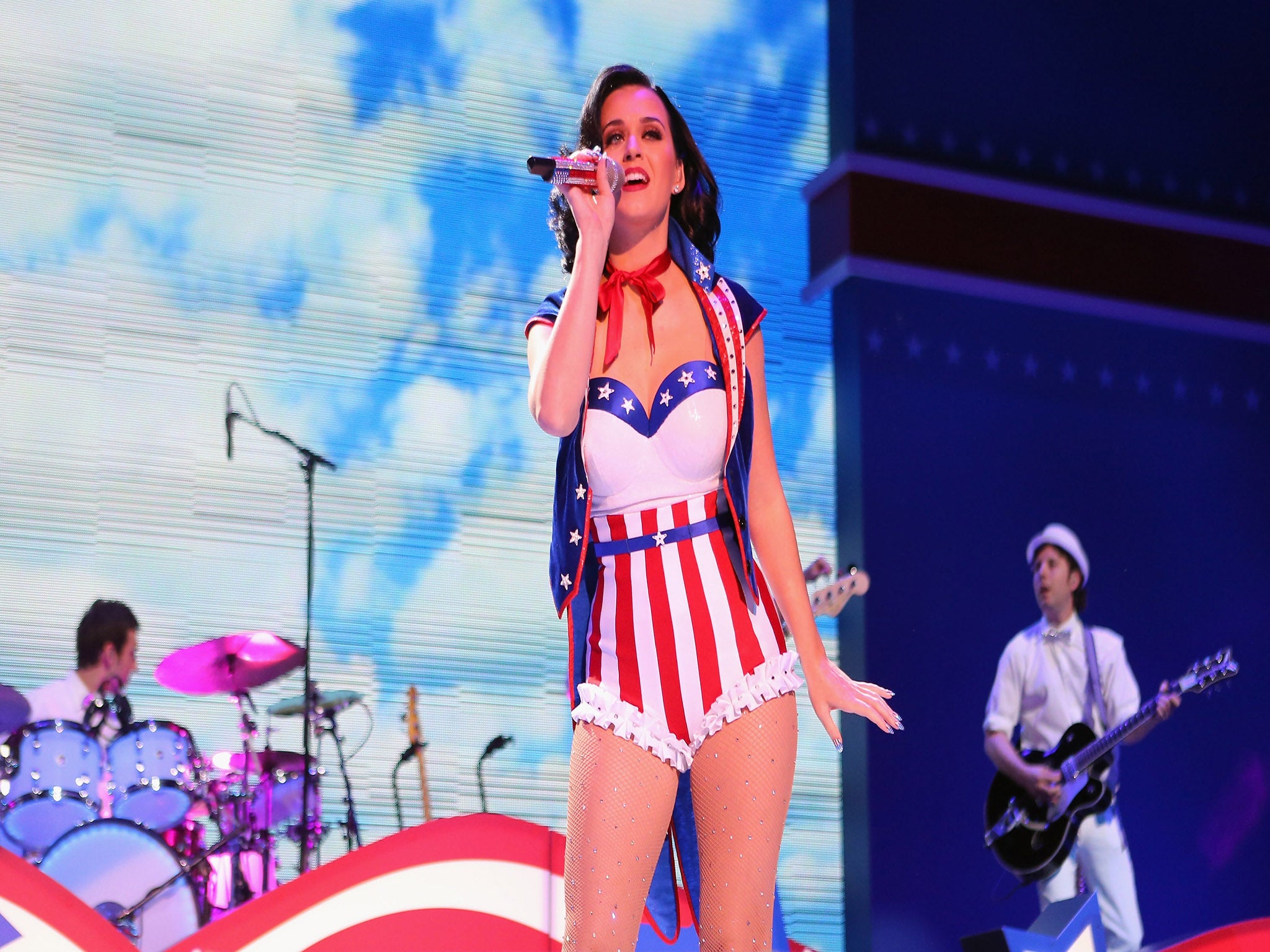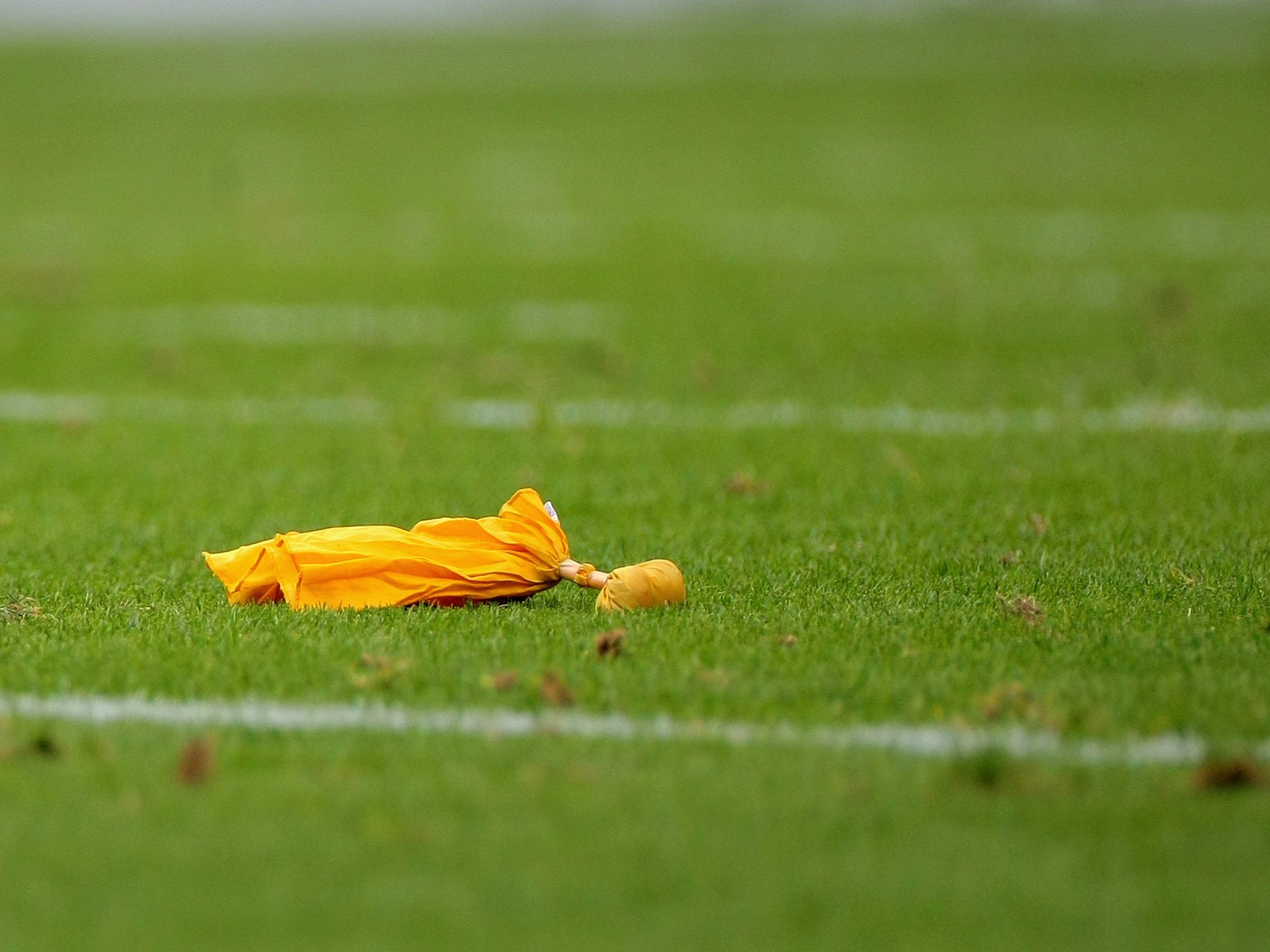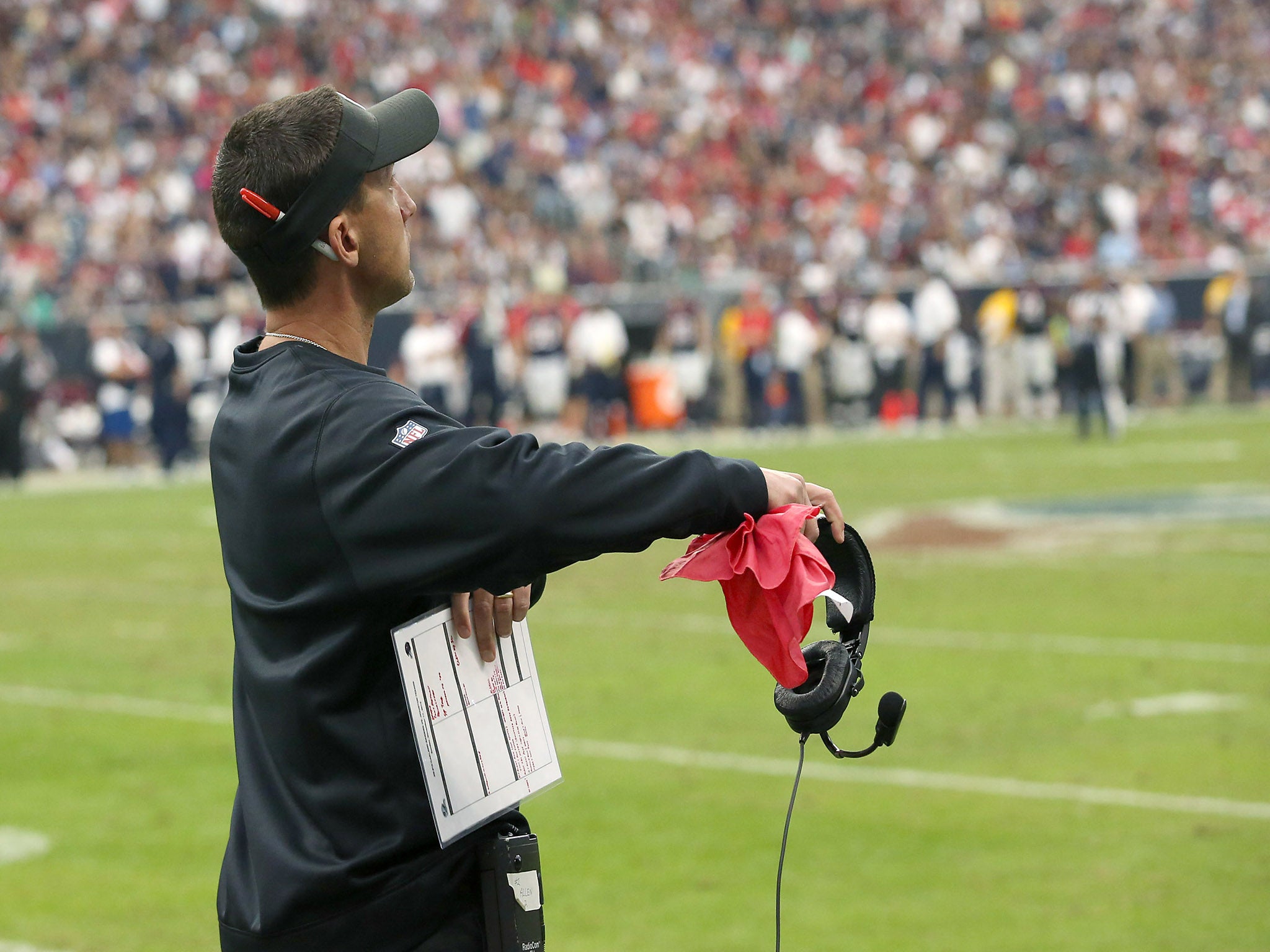11 things non-Americans might not understand about the Super Bowl
A primer for those unfamiliar with the Super Bowl and American football

Super Bowl Sunday is the most American of American holidays. That it’s widely considered a holiday – by the people, if not by the government – is all the more American.
I ashamedly have taken part in a serious discussion in which people complained about having to work the day after the Super Bowl.
We eat, we drink and we revel in the spectacle of the event. It’s a day when 250-pound men violently crashing into each other are spelled by million-dollar advertisements, which is all washed down with chicken wings and beer.
Just about all of us watch the Super Bowl and most attend some sort of party with family or friends to watch the game, even if we don’t care about either team that’s playing. It’s an event unlike anything else in the realm of sport and this year’s game between the New England Patriots and the defending Super Bowl champion Seattle Seahawks should be no different.
Even though the Super Bowl is shown all around the world, it remains a game and an event that is widely misunderstood outside of the US. Here are the 11 things non-Americans might not understand about the Super Bowl.
The advertisements
It’s hard to overstate the importance that advertising has on the Super Bowl, but it’s easy to see. Companies plan all year for their Super Bowl strategy. About half the people who watch the game do so solely to see the commercials.
Forbes reported that in the 2014 Super Bowl, a 30-second ad cost a cool $4 million, while a 1-minute ad ran about $8 million. Forbes also determined that paying that much to reach a Super Bowl-sized audience was worth it. Reports show that a 30-second spot during this year’s game cost around $4.5 million.
Expect companies to reveal new products, make entertaining commercials and generally push the envelope on what’s acceptable in prime-time television.
The halftime show
While the halftime show is a way to use big names to attract viewers and generate hype – the NFL is good at generating hype – most of us could take or leave the Super Bowl halftime show. Sure, Janet Jackson’s wardrobe malfunction in 2004 made some of us wish we hadn’t taken a break from the TV to freshen our drink, but often people watching the Super Bowl use the halftime show the same way the players do.
Katy Perry and Lenny Kravitz will take the stage during halftime and likely will have something up their sleeves, but Ms Perry has promised to be on her best behaviour. Word is she has a special guest making an appearance. Maybe that will keep more eyes on the screen during halftime.

Cheerleaders
Cheerleaders are looked upon as politically incorrect by many Europeans, but they are part and parcel of American sport. The scantily clad dancers surely will get some airtime during the Super Bowl broadcast. This year reportedly is the first time cheerleaders from both teams will be on the sidelines, as the designated home team previously has been the only one to bring its cheerleaders.
While cheerleaders represent part of the fun of sport, the league has come under fire recently for not paying many of these women the wages they deserve.
Money generated
Already mentioned is the cost of advertising during the Super Bowl, but how much money does a television network make for airing the big game?
According to Forbes, the most valuable Super Bowl in history was the Super Bowl XLVI in 2012 between the New England Patriots and the New York Giants, which generated $245 million in total ad revenue. This year, the Patriots are back and playing the defending champion Seahawks. Can this Super Bowl bring in more money?
Sideline reporters
Because football is a game with frequent stoppages in play, it often gets called boring by people unfamiliar with the sport. But the many stoppages offer a unique opportunity for the broadcast team working the Super Bowl.
Reporters will be roaming the sidelines of the game, looking for stories they can present on air during one of the stoppages in play. A star player is injured? You’ll probably hear an update from the sideline as soon as his condition is known.
Those yellow flags
At some point during the game, likely close to the start, one of the game officials will blow his whistle and throw a yellow flag onto the field. This signifies a penalty and in football there are dozens of ways to commit a penalty.
I won’t regurgitate the entire rulebook here, but some of the most common penalties are: holding, grabbing a player’s uniform and preventing him from making a play; offsides, when a defensive player crosses the line of scrimmage prior to the start of the play; false start, when an offensive player moves before the start of the play; pass interference, when an opposing player prevents a player from making a play on the ball while it’s in the air; and unnecessary roughness, which is called for an excessively violent or late tackle.
Penalties result in a loss of yardage for the offending team, theoretically making it easier for the other team to score.

Tailgating
Tailgating is a massive tradition in football. Fans who are attending the game will arrive a few hours early and have a party in the parking lot. Fans fire up the grill, pop open some beers and play lawn games before going to the stadium.
Expect many of the fans at the Super Bowl to stop by a tailgate before heading to the stadium.
Super Bowl parties
For those of us not lucky – or rich – enough to attend the Super Bowl, we often go to Super Bowl parties with our friends or family. They generally are hosted by the friend with the largest television or the most space to hang out and typically each guest brings food and beer to share.
Popular foods include chicken wings, ribs, nachos, chili, chips and dip, and pizza. The US Department of Agriculture once said the Super Bowl is the US’s second-largest day of food consumption, only trailing Thanksgiving.
Safety issues
The biggest threat to the future of the NFL is the ever-expanding scientific data that shows repeated head injuries greatly increases one’s chances of developing chronic traumatic encephalopathy, or CTE. CTE is a degenerative disease with symptoms including dementia, confusion and depression.
Several prominent former NFL stars have committed suicide after showing signs of CTE. In the NFL in the 2014 season, there were 123 concussions, according to PBS. The NFL has started to address concussions, but how much can be done when the sport revolves around some of the strongest men in the world hitting each other as hard as they can?
Challenges
The yellow flags thrown by officials have been discussed above, but what about the red flags thrown by coaches? Those flags represent challenges to a ruling that was just made on the field. If a coach of either team feels the officials got a call wrong, they can throw their challenge flag and the lead officials will go watch video replay of the play in question and make a final ruling.
Not all rulings can be challenged and coaches get two challenges per game, three if the first two are successful.

I hope this story has given you a better understanding of football and the Super Bowl and will help you enjoy Super Bowl Sunday a little bit more. If not, there is always this drinking game you can play while watching.
Follow Payton Guion on Twitter @PaytonGuion.
Join our commenting forum
Join thought-provoking conversations, follow other Independent readers and see their replies
Comments